August 8 is International Cat Day. The Universe Space Tech editorial team is also very fond of the mustachioed felines. We have already written about how in the late 18th century, astronomer Joseph Lalande tried to place the Cat constellation in the sky. Unfortunately, he failed. However, even without this, the pantheon of constellations still includes three representatives of felines: Leo (meaning “Lion”), Leo Minor (“Little Lion”), and the Lynx.
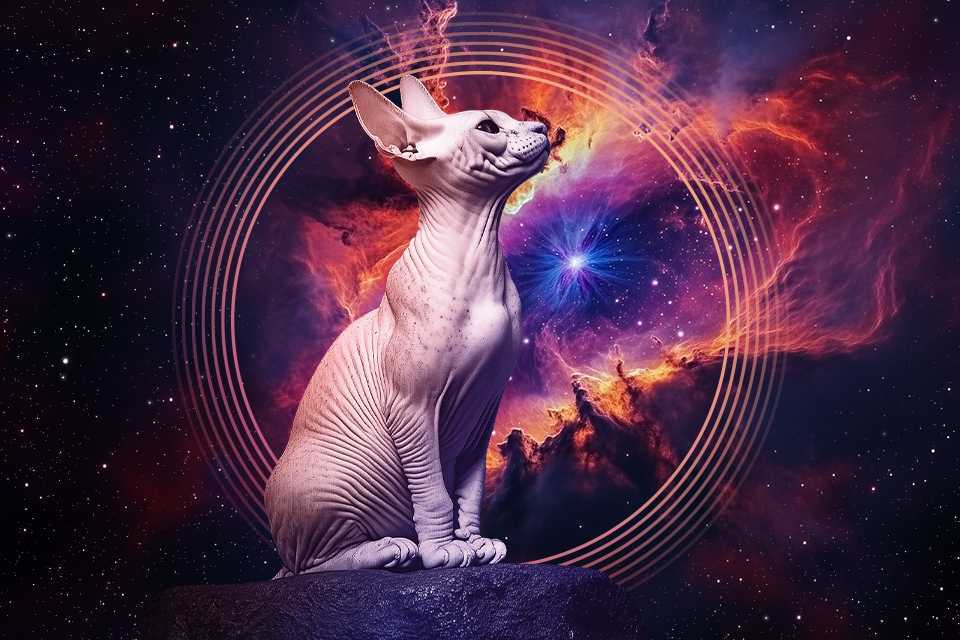
But the “furry” representation in the sky is not limited to constellations. There are also real cat nebulae and even gravitational lenses. Commemorating the International Cat Day, we would like to tell you about them.
The Cat’s Eye Nebula
The Cat’s Eye Nebula has been known to astronomers for a long time. It was discovered by William Herschel back in 1786, and since then, its amazing shape has attracted generations of researchers.
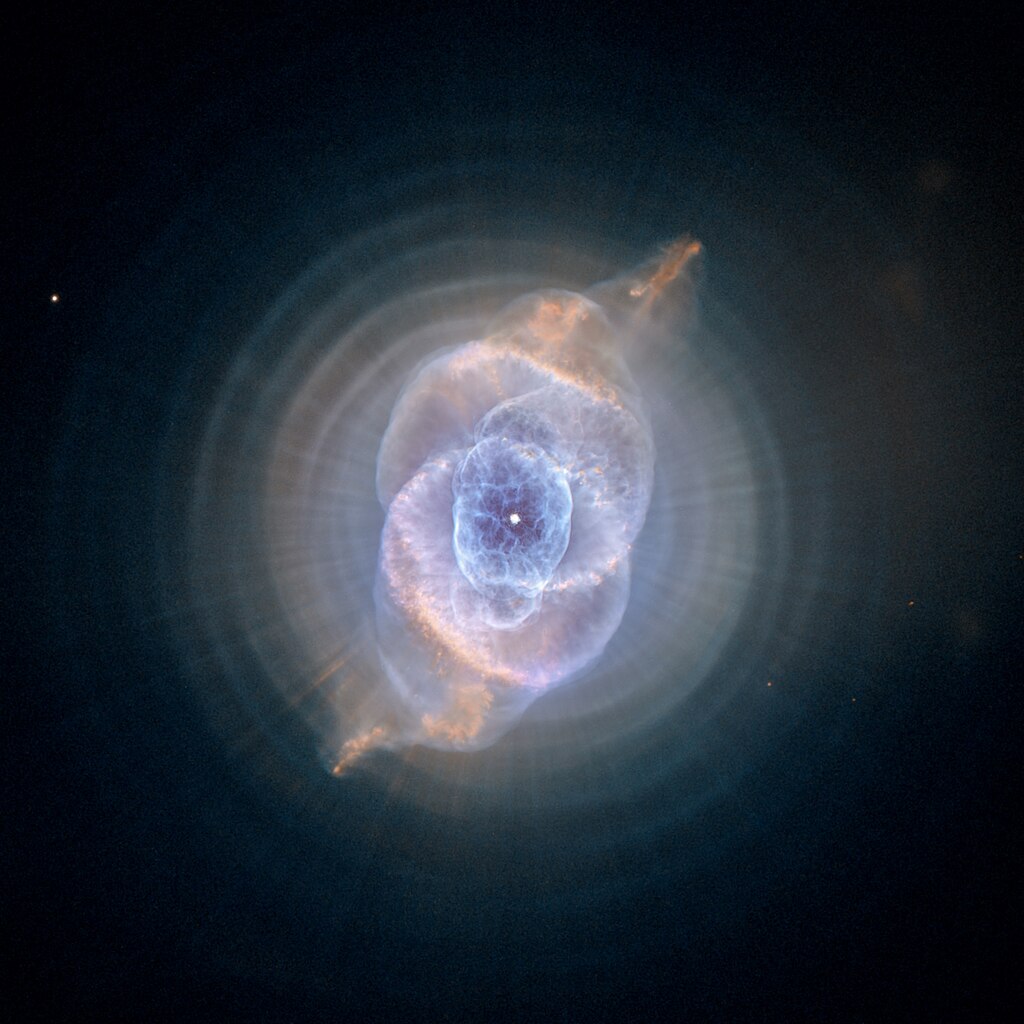
We now know that the Cat’s Eye is a planetary nebula located several thousand light years from Earth. Such objects are formed when a star that has reached the stage of a red giant sheds the outer layers of its atmosphere, leaving its core exposed. Its powerful radiation ionizes the surrounding matter, causing it to glow and making the nebula visible.
According to many researchers, the characteristic shape of the Cat’s Eye is explained by the fact that it is a binary system — and the gravity of the companion has affected the matter ejected by its main component. It is a Wolf-Rayet class star. Once the star’s mass was five solar masses, but now it has decreased to just one. The dying star is still actively ejecting matter, losing 20 trillion tons every second.
However, astronomers have not yet been able to confirm the existence of a second star in this system. But whatever the reason for its complex shape, it does not affect the beauty of the Cat’s Eye. The nebula has a stellar magnitude of +9.8 and a high surface brightness, which makes it accessible for observations even with a small telescope.
The Cat’s Paw Nebula
Not only earthly cats, but also space cats have feet — namely, the NGC 6334 nebula, which is called the Cat’s Paw. Looking at the images taken by the telescopes, it may seem that it is enough to stretch a little to touch it. But in fact, the nebula is more than 4 thousand light years away.
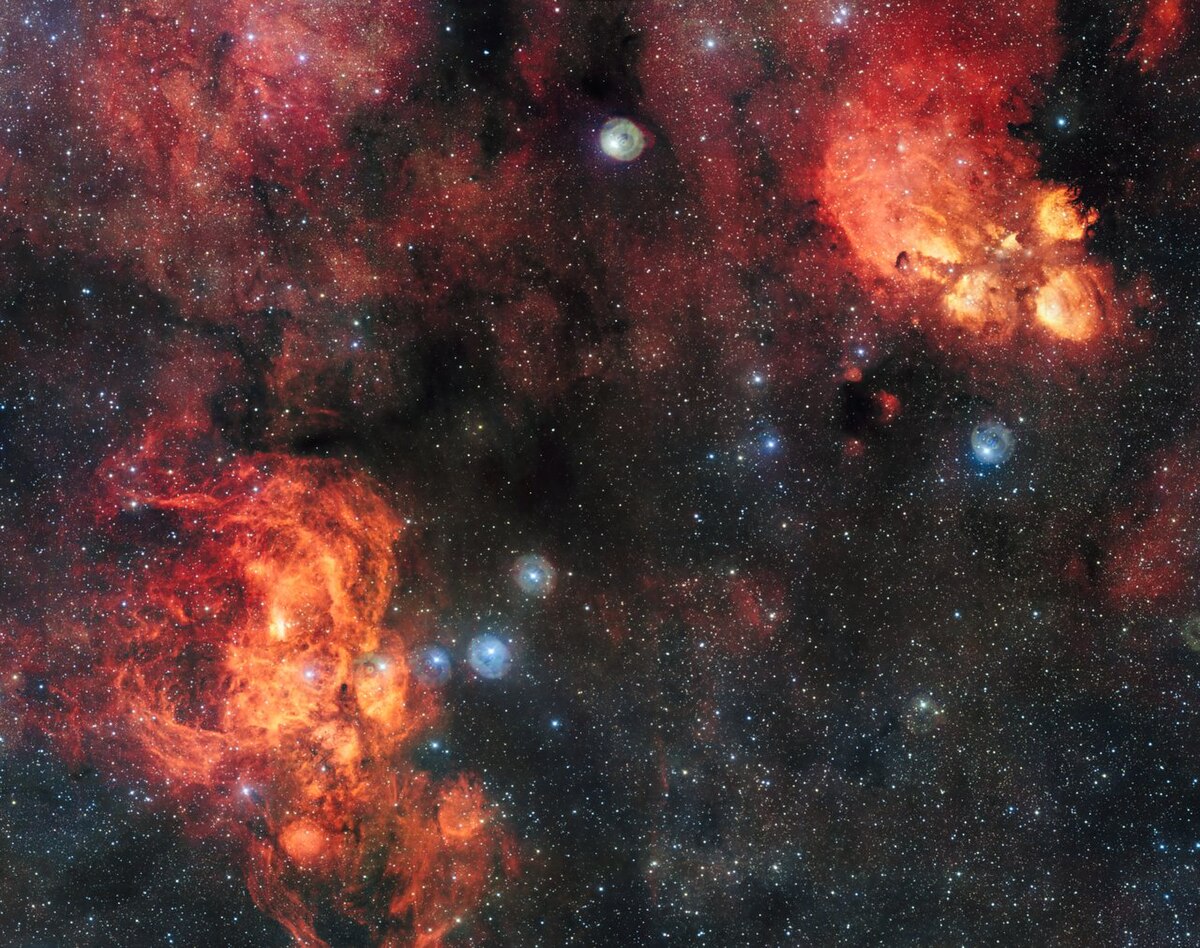
The Cat’s Paw is a region of active star formation with a length of 80-90 light-years. The characteristic bubbles in the image are formed by young stars forming inside the nebula, whose powerful radiation heats up the surrounding gas, causing it to expand and glow.
Some bubbles eventually “burst”, creating U-shaped structures. The nebulae are also rich in dust, the accumulation of which blocks light, making them look like dark clouds.
In the future, these dark clouds will give rise to a new generation of stars and planets orbiting them. Who knows, maybe one of them will be home to life and eventually have its own cats?
The Smiling Cat Nebula
You’ve probably all heard of the famous Cheshire cat’s smile. Space cats can smile, too, as this image taken by the VLT survey telescope proves. The outline of the nebula it captured is very similar to a smiling cat.
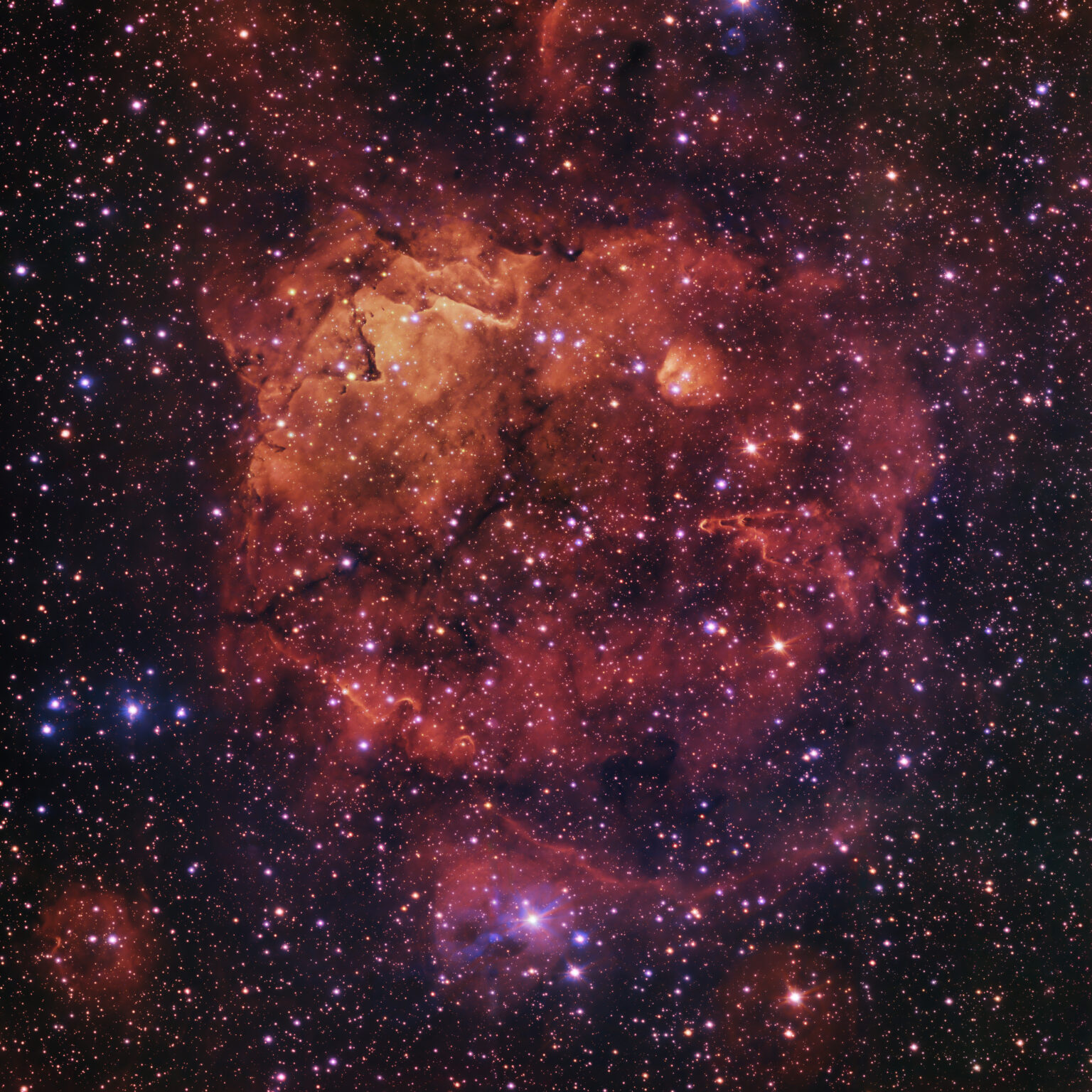
The official name of the cosmic smiling cat is Sh2-284. It is a stellar nursery — a region of active star formation located at a distance of 15 thousand light-years from Earth towards the constellation “Unicorn” (Monoceros). It is a large accumulation of gas and dust over 150 light-years long, where new stars are forming right now.
In the center of the brightest part of the nebula, right under the “cat’s nose,” is a cluster of young stars known as Dolidze 25. They are a source of powerful ultraviolet radiation that ionizes the hydrogen clouds that surround them. As a result, they begin to glow bright orange and red. These clouds are the building blocks for new stars.
Winds generated by the central cluster of stars push gas and dust out of the nebula, creating a cavity. When they encounter denser clusters of material, they first erode the areas around them. This creates a few pillars that can be seen along the edges of Sh2-284 pointing toward the center of the nebula, such as the one on the right side of the image. Although these pillars appear small in the image, they are actually several light-years wide and contain huge amounts of gas and dust from which new stars form.
Space Cheshire Cat
While we’re on the subject of the Cheshire Cat’s smile, we should mention another rather interesting space object, even if it is not a nebula. We are talking about the galaxy cluster SDSS J1038+4849. Just look at its image to understand why it is often called the Cheshire Cat’s smile.
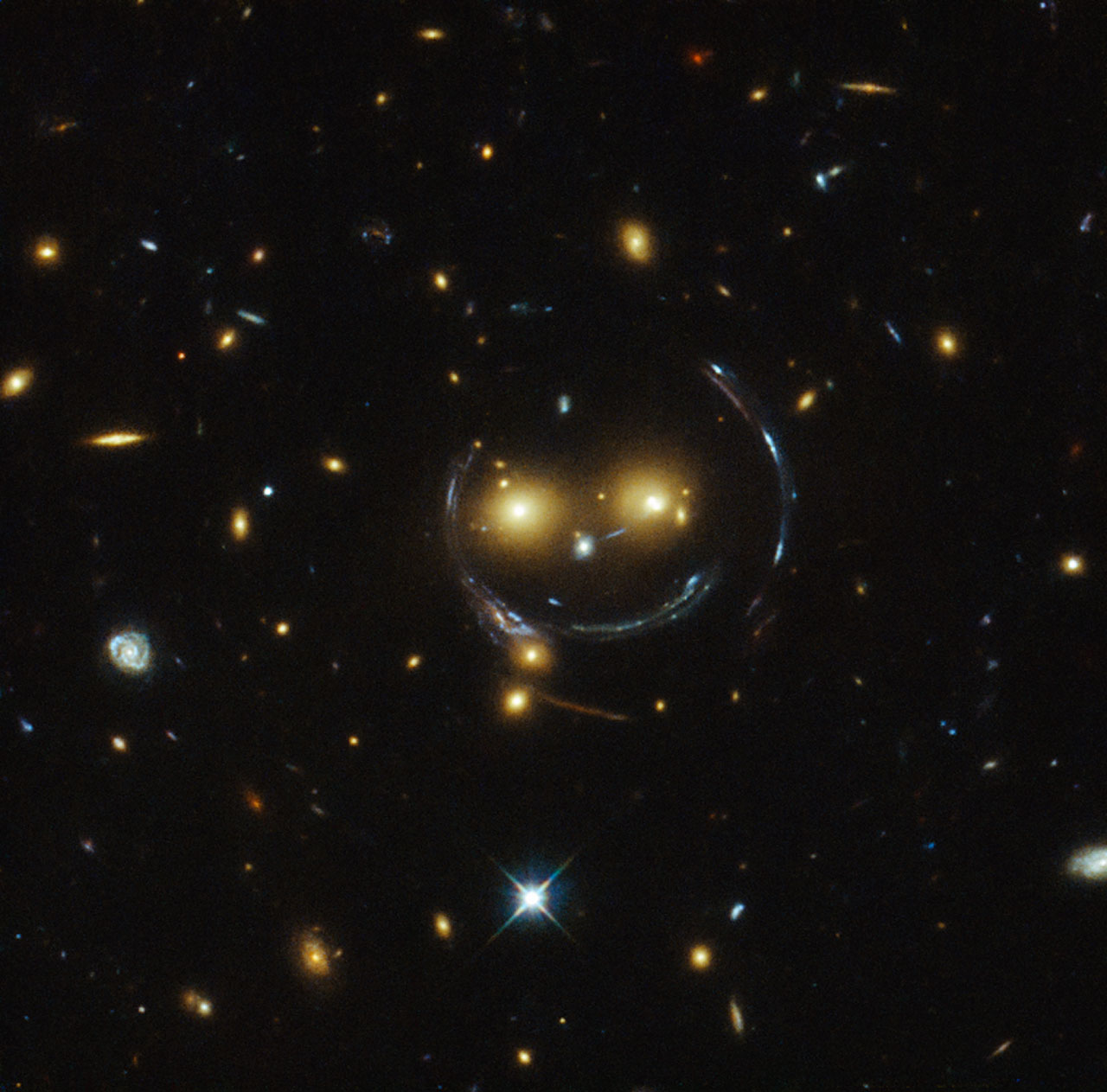
We can admire a huge cosmic smile thanks to the gravity of the cluster. It is so powerful that it bends the light rays, acting like a giant lens. In reality, the two eyes are very bright galaxies, and the deceptive lines of the smile are images of other distant galaxies transformed into arcs created by the effect of gravitational lensing.

